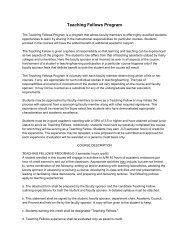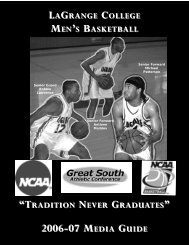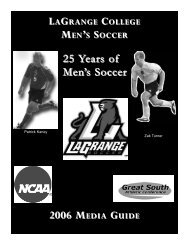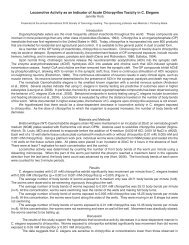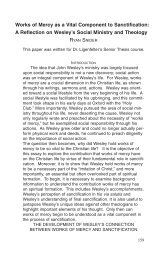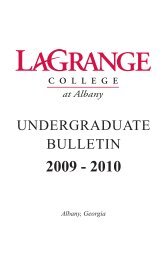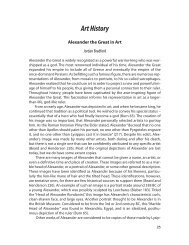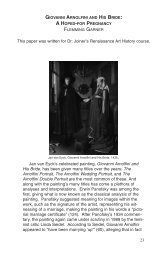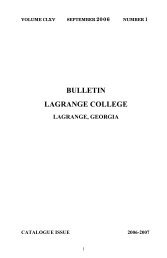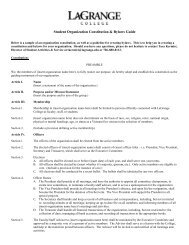The Speed of Light: Historical Perspective and Experimental Findings
The Speed of Light: Historical Perspective and Experimental Findings
The Speed of Light: Historical Perspective and Experimental Findings
You also want an ePaper? Increase the reach of your titles
YUMPU automatically turns print PDFs into web optimized ePapers that Google loves.
THE SPEED OF LIGHT<br />
Given the failure <strong>of</strong> Galileo <strong>and</strong> Descartes, Ole Roemer<br />
sought to determine the velocity <strong>of</strong> light by observing even further<br />
distances. Roemer studied the eclipses <strong>of</strong> Jupiter’s moon,<br />
Io. Roemer timed the moment that Io became hidden by Jupiter<br />
<strong>and</strong> then the moment that it reappeared. He would then compare<br />
this time interval as Earth moved closer <strong>and</strong> further away<br />
from Jupiter. Roemer realized that as Earth moved away from<br />
Jupiter, the time interval for time spent hidden increased. As<br />
earth rotated back closer to Jupiter, the hidden time interval<br />
would slowly decrease. Although Roemer himself never actually<br />
gave a numerical value for the speed <strong>of</strong> light, he did state that<br />
light requires about a second (s) <strong>of</strong> time to traverse a distance<br />
equal to the diameter <strong>of</strong> the earth. From this statement it can be<br />
deduced that light would require 22 minutes to traverse the<br />
earth’s orbit. 3 <strong>The</strong>se numbers were combined by Christian<br />
Huygens to give the value <strong>of</strong> 2.20 x 10 8 m/s which gives a percent<br />
error <strong>of</strong> about 26% from the currently accepted value. 1<br />
Although the value is inaccurate, it was the first reproducible<br />
result for the speed <strong>of</strong> light <strong>and</strong> gave pro<strong>of</strong> that the speed <strong>of</strong><br />
light was finite.<br />
For the next 150 years people would continue to adapt<br />
Roemer’s experiment <strong>and</strong> come up with a multitude <strong>of</strong> values<br />
for the speed <strong>of</strong> light. Even Isaac Newton attempted to determine<br />
the speed <strong>of</strong> light <strong>and</strong> predicted it to be about 2.41x 10 8<br />
m/s. Newton derived his speed using Cassini’s value for the<br />
retardation <strong>of</strong> light from the sun <strong>and</strong> his own guess that the distance<br />
from the earth to the sun was approximately 1.12 x 10 11<br />
meters (m). If Newton had used Cassini’s own value for the distance<br />
from the earth to the sun, 1.46 x 10 11 m, he would have<br />
arrived at a speed <strong>of</strong> light <strong>of</strong> approximately 3.05 x 10 8 m/s, only<br />
a 2 percent error from the now accepted value. 3<br />
Up until the 1840s, no one had been able to determine an<br />
accurate measurement for the speed <strong>of</strong> light using only terrestrial<br />
measurements. In 1849, Arm<strong>and</strong> Fizeau sought to remedy<br />
this problem. Fizeau set up a rotating cog wheel with 720 teeth<br />
spinning at 12.6 revolutions per second (rev/s). Fizeau sent a<br />
lamp beam through the teeth <strong>and</strong> then 8 kilometers (10 3 m)<br />
away to a mirror. Upon returning, the beam was brought though<br />
the gaps <strong>of</strong> the teeth. As the light passed through the gaps on<br />
186




